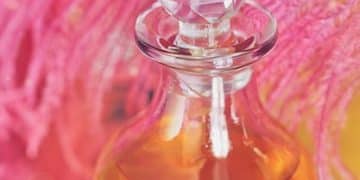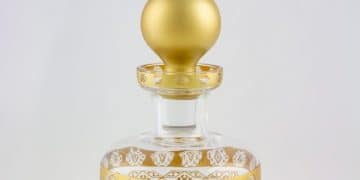Decoding Sillage: A Comprehensive Guide to Fragrance Trails
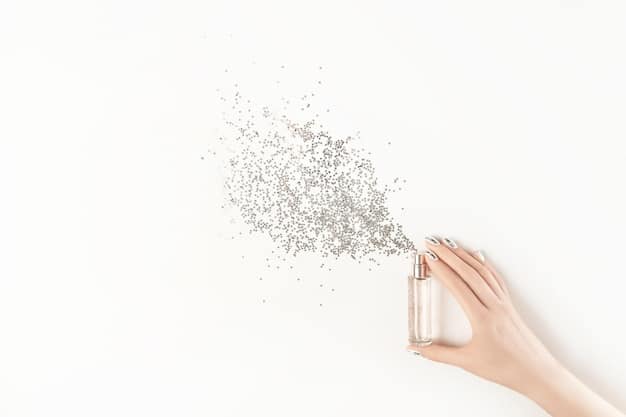
Decoding the sillage involves understanding how a fragrance lingers and projects in the air after the initial application, influenced by factors like perfume concentration, skin chemistry, and environmental conditions, ultimately defining its unique trail and impact.
Ever wondered how some perfumes leave an unforgettable trail while others fade away quickly? The secret lies in understanding decoding the sillage: how a fragrance interacts with the air and lingers in a captivating manner.
Decoding the Sillage: Understanding Fragrance Trail
Sillage, pronounced “see-yahzh,” is a French term that refers to the trail or wake a perfume leaves behind as the wearer moves. It’s the lingering scent that others perceive, and it differentiates a fragrance’s presence from its initial scent.
Fragrance enthusiasts often discuss sillage when describing the overall impact of a perfume. A strong sillage means the fragrance is noticeable from a distance, while a weak sillage indicates it stays close to the skin.
The Science Behind Sillage
The sillage of a fragrance depends on its molecular weight and volatility. Lighter molecules tend to evaporate more quickly, creating a stronger sillage, while heavier molecules stay closer to the skin.
The concentration of perfume oils also plays a significant role. Perfumes with higher concentrations, like Eau de Parfum or Extrait de Parfum, typically have a stronger sillage than lighter concentrations like Eau de Toilette or Eau de Cologne.
- Molecular Weight: Lighter molecules = stronger sillage.
- Volatility: Highly volatile ingredients evaporate quickly and project further.
- Concentration: Higher concentration = stronger sillage.
Ultimately, the sillage of a fragrance is what makes it memorable and leaves a lasting impression. Factors such as skin type, application method and the environment can affect how sillage is perceived by others.
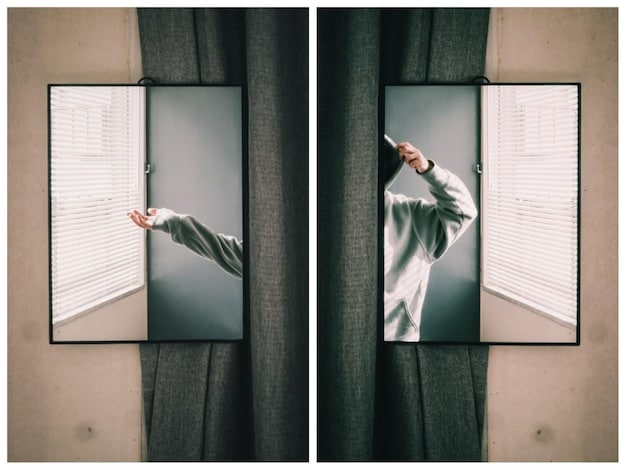
Factors Influencing Sillage: Skin, Environment, and Application
Sillage is not only determined by the perfume itself but also by factors such as skin type, environmental conditions, and application techniques. Understanding these elements can help you maximize the sillage of your favorite fragrance.
Skin chemistry plays a crucial role. Perfumes react differently on different skin types, affecting how the fragrance projects and how long it lasts. Dry skin tends to absorb fragrance more quickly, resulting in weaker sillage, while oily skin can enhance sillage due to its natural oils.
Skin Chemistry and Sillage
Individual skin pH and the presence of natural oils can alter the scent and longevity of a perfume. Moisturizing the skin before applying fragrance can also help to improve sillage.
The environment also has a significant impact. Humidity can amplify sillage, while dry air can diminish it. Temperature also affects how fragrance molecules evaporate.
Application Techniques for Enhanced Sillage
Applying perfume to pulse points, such as the wrists, neck, and behind the ears, can help to increase sillage due to the warmth generated in these areas. Layering fragrance with scented lotions or oils can also help to prolong its scent trail. Some people spray perfume on their clothes, which can make the projection last longer.
- Pulse Points: Applying to warm areas enhances projection.
- Layering: Using scented lotions prolongs the scent.
- Clothing Application: Can extend the fragrance duration.
In conclusion, sillage is dynamic and influenced by several elements. By taking these factors into account, you can tailor your fragrance experience and ensure your signature scent leaves a lasting mark.
Fragrance Families and Sillage Performance
Different fragrance families inherently possess varying sillage capabilities. Understanding these variances can guide you to choose perfumes that align with your desired scent projection.
Oriental and amber fragrances often exhibit a strong sillage due to their rich, heavy notes like vanilla, patchouli, and resins. These ingredients tend to linger and project well, making them ideal for those seeking a noticeable scent trail.
Sillage in Floral and Fruity Fragrances
Floral fragrances can vary in sillage depending on the specific floral notes used. Some floral notes, like jasmine and tuberose, are more potent and create a stronger sillage, while others, like lily of the valley, are lighter and more delicate. Fruity fragrances typically have a moderate sillage, as their lighter, fresher notes tend to dissipate more quickly.
Woody and earthy-based fragrances offer a more subtle projection. Fragrances built around cedarwood, sandalwood and vetiver provide a nuanced projection and are known to leave a memorable, yet calming sillage.
Knowing which fragrance profiles appeal to your sense of smell is highly beneficial when selecting the right perfume. However, a fragrance’s notes are important to acknowledge when discussing sillage performance.
- Oriental/Amber: Known for strong and lasting projection.
- Floral: Varies; some notes are more potent.
- Woody: Offers a subtle, calming sillage.
In summary, choosing the right fragrance family is essential for achieving your desired sillage. Orient yourself towards the specific ingredients recognized to leave impressions.
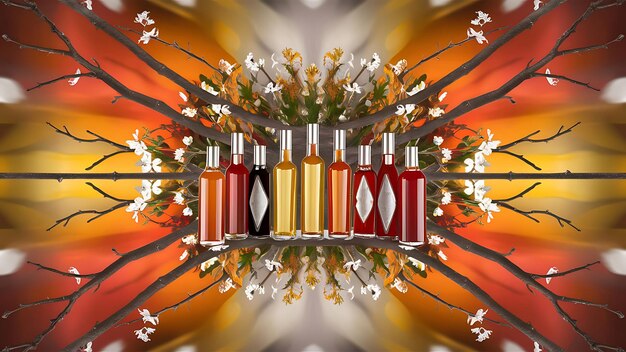
Decoding Sillage: Strong vs. Weak Sillage – What’s the Difference?
Sillage can be broadly categorized as either strong or weak, each offering a distinct olfactory experience. The choice between the two often depends on personal preferences and the context in which the fragrance is worn.
Strong sillage is characterized by a perfume’s ability to project its scent over a considerable distance. These fragrances often contain potent ingredients and are designed to make a bold statement.
Benefits of Strong Sillage
Strong sillage fragrances are ideal for social events, evenings out, or any occasion where you want to be noticed. They can leave a memorable impression and exude confidence. However, they may not be suitable for close quarters, such as offices or small gatherings, where a more subtle scent is preferred.
Weak sillage, on the other hand, refers to fragrances that stay close to the skin and have minimal projection. These scents are often described as intimate and personal.
Benefits of Weak Sillage
Fragrances with weak sillage are perfect for everyday wear, professional settings, or situations where you want to avoid overwhelming those around you. They create a subtle aura of fragrance that only those in close proximity can detect. Weak sillage is also advantageous when fragrance sensitivities are a concern. In addition, they are perfect for layering with other perfumes.
- Strong Sillage: Ideal for making a bold statement.
- Weak Sillage: Perfect for intimate and professional settings.
- Consider the Context: Choose sillage based on the occasion.
Ultimately, the choice between strong and weak sillage comes down to personal taste and the specific needs of the occasion. Understanding the distinct qualities of each can help you select the perfect fragrance for any moment.
Maximizing Sillage: Tips and Tricks to Make Your Fragrance Last
If you wish to maximize the sillage of your fragrance, the good news is that there are several effective tips and tricks you can employ to prolong its scent trail and ensure it leaves a lasting impression.
One of the most important factors is proper skin hydration. Applying fragrance to moisturized skin can significantly enhance its longevity and sillage. Dry skin tends to absorb fragrance more quickly, reducing its projection.
The Role of Moisturizing
Using a fragrance-free moisturizer or a lotion with compatible scents can create a base that helps to trap fragrance molecules, prolonging their release over time. Consider applying the moisturizer immediately after a shower while your skin is still damp.
Layering fragrance with other scented products, such as shower gels, body lotions, or hair mists, is another effective way to boost sillage. By using products within the same fragrance family, you can create a synergistic effect that intensifies the overall scent experience.
Optimal Application Points
Applying fragrance to pulse points, such as the wrists, neck, and behind the ears, is recommended due to the warmth generated in these areas, which helps to diffuse the fragrance. However, don’t overlook other strategic spots, such as the inside of your elbows, behind your knees, or even in your hair.
- Hydrate Skin: Moisturizing enhances longevity.
- Layering: Use compatible scented products.
- Strategic Application: Apply to pulse points and hair.
By implementing these simple yet effective techniques, you can significantly amplify the sillage of your fragrance and enjoy its captivating trail for an extended period. Take the time to experiment with different methods to find what works best for your favorite scents.
Sillage and Personal Expression: Crafting Your Signature Scent
Sillage is more than just a measure of a fragrance’s projection; it’s an extension of your personal style and a means of self-expression. Crafting your signature scent involves selecting fragrances that resonate with your personality and leave a memorable impression.
Choosing a signature scent is a highly personal process that requires experimentation and self-awareness. Consider your lifestyle, preferences, and the image you want to project. Your signature scent should reflect your unique identity and make you feel confident and comfortable.
Exploring Your Personal Style
Start by exploring different fragrance families to identify which ones resonate with you most. Do you prefer the freshness of citrus and aquatic notes, the warmth of oriental and amber accords, or the elegance of floral bouquets? Allow yourself to be guided by your instincts and don’t be afraid to try something new.
Think about the occasions and settings in which you’ll be wearing your signature scent. A light and airy fragrance may be suitable for everyday wear, while a bolder and more complex scent may be more appropriate for special events.
Layering Fragrances to Personalize Sillage
An effective method to construct the degree of sillage that you’re trying to convey is to layer fragrances. This is done by wearing scents built off the same or similar family. Sillage is highly subjective; what may be too strong for you may be pleasant to someone else.
- Experiment: Try different fragrance families.
- Consider Occasions: Match scent to the setting.
- Express Yourself: Choose scents that reflect your personality.
In conclusion, sillage is a powerful tool for personal expression, allowing you to leave a lasting impression and communicate your unique identity through scent. It’s an authentic way to project to the world that you care about the small details and that fragrance is more than just simple notes, but is akin to an accessory.
| Key Point | Brief Description |
|---|---|
| 💨 Sillage Definition | The trail a fragrance leaves behind. |
| 🧪 Influencing Factors | Skin chemistry, concentration, & environment. |
| 🌸 Fragrance Families | Oriental & woody sillage. |
| 💡 Maximizing Sillage | Hydrate skin & layer scented products. |
[Frequently Asked Questions]
▼
Sillage is the trail or wake that a fragrance leaves behind as the wearer moves, essentially it’s the lingering scent perceived by others after you’ve passed by.
▼
Skin chemistry, including pH levels and natural oils, interacts with fragrance molecules, altering their projection and longevity, often making the scent unique to each individual.
▼
Oriental and amber fragrances are known for their strong sillage due to rich, heavy notes like vanilla, patchouli, and resins that tend to linger and project well.
▼
Yes, layering fragrances with similar or complementary notes can intensify and prolong the scent trail, enhancing its overall sillage and creating a more complex aroma.
▼
To improve sillage, hydrate your skin with a fragrance-free moisturizer before applying perfume to pulse points; layering with matching scented lotions is also effective.
Conclusion
Understanding and manipulating sillage can greatly enhance your fragrance experience, allowing you to craft a memorable and personalized scent trail. Whether you prefer a bold, attention-grabbing sillage or a subtle, intimate one, the key is to experiment and find what works best for you, creating a scent that truly reflects your personality.
